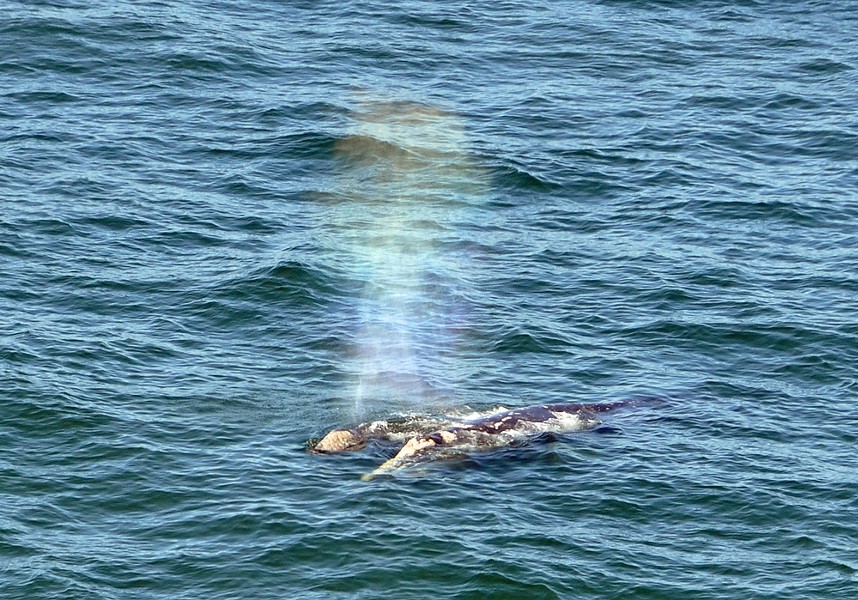There are two types of people in this world: There are people who would be horrified to witness a pod of orcas attacking a baby whale and ripping out its tongue, and there are those of us who would go, "Yeah! Wooo!"
The orcas responsible for this glorious (or horrifying) behavior are the so-called transients or Bigg's killer whales. They migrate up and down the West Coast in small family pods hunting marine mammals. People have documented them taking seals and sea lions along the Humboldt coast a few times in recent years. In fact, my wife photographed orcas jumping and lobbing their tails near a local offshore rock with a bunch of sea lions resting on it. This seemingly celebratory behavior is supposedly common after a killer whale family shares a hard-earned meal.
Lucky scientists who study orcas preying on whales have found that the best way to survive an attack is for the mother and calf to swim into shallow water. When the gray whales head south for the winter to breed and give birth, they usually migrate offshore. But when the mothers migrate back north to summer feeding grounds, they hug the coast with their newborns — presumably to avoid orca predation. So even if you don't like orcas killing baby gray whales, you have this predatory behavior to thank for your opportunity to watch a playful baby whale goofing around near the shore.
I've been watching mother gray whales and their yummy calves migrating past Patrick's Point for years, but I haven't seen any carnage yet. Wedding Rock is a popular spot to view these mother and calf pairs, which sometimes swim almost directly below the rock. Even though the water is shallow there, I think it's my best chance to enjoy a slaughter (while tourist mothers and their miserable children scream and sob all around me).
A baby gray whale is still a huge animal — much too big for an orca family to eat in one sitting. But, unfortunately for the baby whales, their tongues are a boneless cut of a size perfect for an orca family dinner. So, oftentimes, these attacks result in only the baby's tongue being eaten.
While I haven't had the luck to witness this gruesomeness myself, I have found washed-up evidence of attacks on our local beaches. Back in 2010, a small gray whale washed up on Mad River Beach with scrapes from orca teeth on its fins and apparent bite marks on what was left of its tongue.
And in 2014, we found the bones of what's probably a small minke whale at Cape Mendocino. (Minke whales are also baleen whales, smaller and sleeker than gray whales, but I've never seen a live one near Humboldt.) The top of the cranium had three punctures in it. One of the holes was round like the tip of an orca tooth. Unless somebody killed it with a ball-peen hammer, I'm calling the holes proof of a fascinating and fun orca attack.
But maybe I just need a little empathy to help me stop being a monster.
Visualize ... I'm a baby whale swimming close to my mother's side and out of nowhere several black and white rubbery bastards start bashing me and pushing me underwater, attempting to drown me. My frantic mom tries her best to defend me but it's no use. Then, just before my tongue gets ripped out, I roll on my side and look up to see some prick pointing at me from high on a rock going, "Yeah! Wooo!"
Nah. It's still going to be fun to see.
Biologist Mike Kelly (he/him) writes science-based satire as M. Sid Kelly. It's available at Eureka Books and for Kindle.









Comments
Showing 1-1 of 1